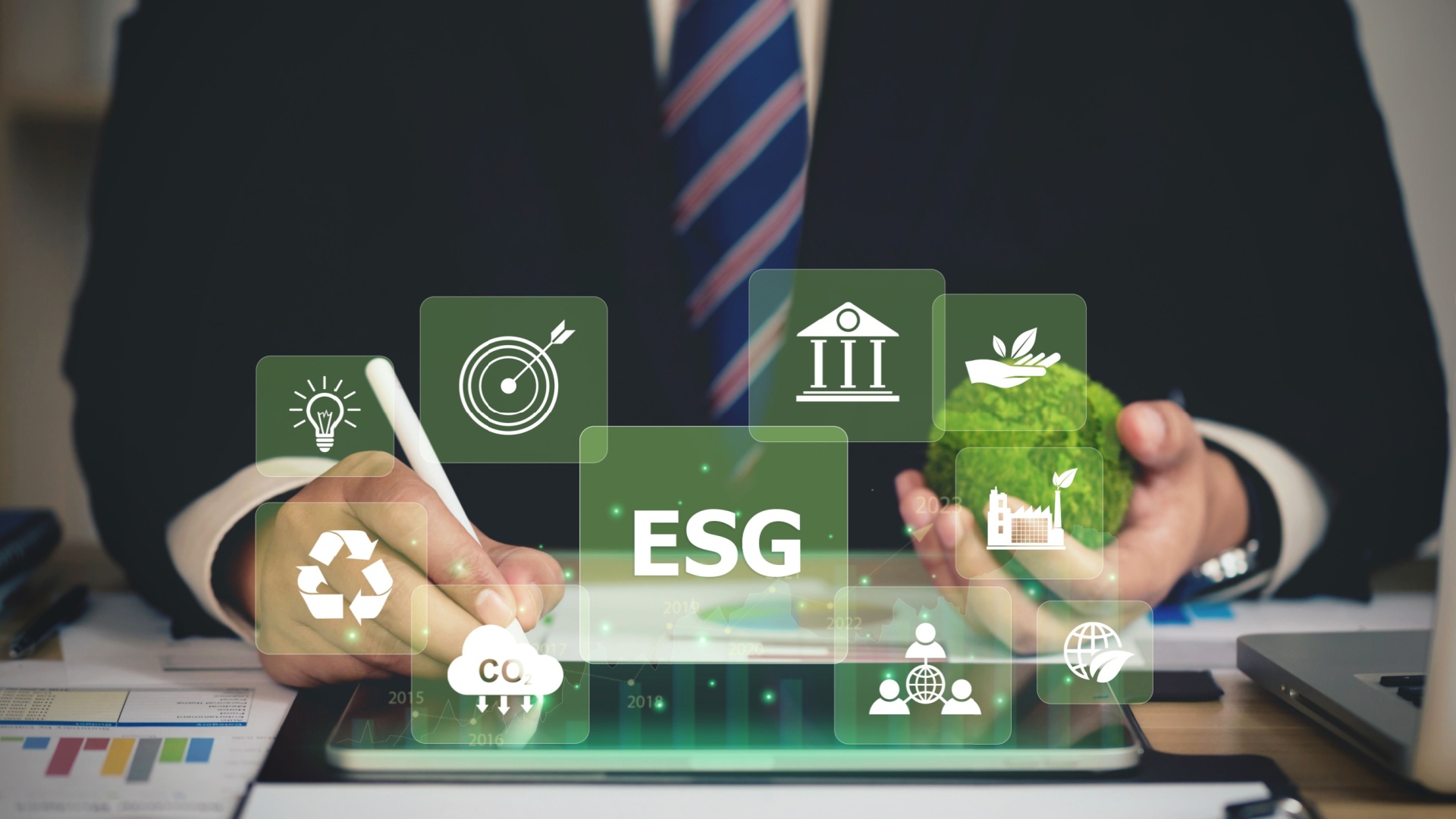
The subject is an emerging area of focus for the banking sector, driven by the need to address global environmental challenges such as climate change, biodiversity loss and social inequalities. It seeks to heighten awareness and transparency among financial stakeholders regarding the imperative of mitigating ESG risks through effective management, recognizing the prolonged-term nature of these risks and the uncertainty surrounding their assessment. This guide aims to provide banking professionals with an understanding of sustainable finance and its relevance to their business operations.
Introduction
The banking sector has a significant role to play in addressing sustainability challenges, as it is a key source of financing for businesses and governments.
By understanding the regulation context and integrating sustainability into their operations, banks can reduce their exposure to ESG risks and create new business opportunities in the emerging green economy.
The regulation context
The European sustainable finance strategy
The European Union (EU) Sustainable Finance Strategy, adopted in July 2020, is a comprehensive plan to mobilize private capital towards sustainable investments and to ensure the financial sector's contribution to the EU's environmental and climate objectives.
The strategy aims to mainstream sustainability into all aspects of the financial system, by providing clear definitions and transparency requirements for sustainable investments, improving corporate reporting on sustainability and creating a common EU-wide classification system for sustainable activities. The strategy also includes measures to promote sustainable finance education and to strengthen supervisory frameworks, in order to ensure financial institutions' compliance with environmental and social standards.
Overall, the EU Renewed Sustainable Finance Strategy seeks to align the financial system with the EU's broader sustainability objectives, supporting the transition to a more sustainable, low-carbon, and resource-efficient economy.
EU Taxonomy
The EU Taxonomy is a classification system that has been created by the European Union with the objective of defining economically sustainable activities from an environmental perspective.
The Taxonomy covers a broad range of sectors, including energy, transport, agriculture and manufacturing, among others. Its criteria are based on scientific evidence and focus on activities that make a significant contribution to mitigating climate change, protecting biodiversity, ensuring the efficient use of resources.
The EU Taxonomy is expected to play a crucial role in the transition towards a sustainable economy, by channeling investments towards environmentally sustainable activities and promoting transparency and comparability in the financial market.
The Carbon Border Adjustment Mechanism (CBAM) – H3
The Carbon Border Adjustment Mechanism, or CBAM, is a tool promoted by the European Union to address the relocation of carbon emissions. Specifically, CBAM aim is to align the carbon price of domestic products with imports, ensuring that EU climate policies are not undermined by production shifting to countries with less ambitious environmental standards or by the substitution of EU products with higher carbon intensity imports.
The instrument encourages the global industry to adopt greener and more sustainable technologies. From October 2023 and until 2026 it will apply only to imports of cement, iron and steel, aluminum, fertilizers, electricity, and hydrogen. EU importers of these goods will be obligated to report the volume of their imports and the greenhouse gas emissions associated with their production, without any financial adjustments.
From 2026 onward, however, importers will be required to purchase and surrender the corresponding number of "CBAM certificates" for the greenhouse gas emissions embedded in the CBAM-covered imported goods.
The Commission will evaluate the possibility to expand the scope of CBAM to other goods produced in the ETS sectors (Emissions Trading System).
Sustainable finance disclosure regulation (SFDR)
Sustainable finance disclosure regulation pertains to the set of guidelines and directives instituted to enhance transparency and accountability in financial reporting pertaining to sustainability matters.
This regulation mandates companies to divulge their ESG data, encompassing climate risks, carbon emissions, and social impact and encourages companies to report on their sustainability performance, with the goal of advancing sustainable investment and motivating companies to adopt sustainable practices. It also facilitates informed investment decision-making, risk management and support for companies that align with ESG objectives and values.
The Corporate Sustainability Reporting Directive (CSRD)
The Corporate Sustainability Reporting Directive is a regulatory framework introduced by European lawmakers in 2021 to replace the previous European Non-Financial Reporting Directive (NFRD). It expands the scope of reporting obligations from 11,000 to 50,000 companies in Europe to:
- companies with a minimum of 250 employees, which are required to disclose non-financial information starting from the fiscal year 2023;
- listed small and medium-sized enterprises (SMEs), excluding microenterprises.
The implementation of the CSRD will take place in several phases: by 2025, the guidelines will apply to companies already subject to the NFRD, while from 2026, companies not previously subject to the NFRD will be included. In 2027, listed SMEs, small and non-complex credit institutions, and captive insurance companies will be obliged to report. Finally, by 2029, the reporting obligations will extend to third country firms.
According to the directive, the Corporate Sustainability Report that companies must produce encompasses several components, including a depiction of the company's business model and strategy, its sustainability policies, identification and alleviation of adverse impacts, management of sustainability-related risks, and the essential Key Performance Indicators (KPIs) for reporting.
The Corporate Sustainability Due Diligence Directive (CSDDD)
Adopted in February 2022, the Corporate Sustainability Due Diligence Directive (CSDDD) aims to promote sustainable and responsible corporate behaviour by incorporating human rights and environmental considerations into the operations and governance of companies.
The directive requires companies to identify, address, prevent, mitigate, and account for any negative impacts on human rights and the environment. This includes issues such as child labour, worker exploitation, pollution, and biodiversity loss, both within the company's operations and across its subsidiaries and value chains.
The CSDDD applies to:
- EU limited liability companies with substantial size and economic power, defined as having 500 or more employees and a net turnover of over EUR 150 million worldwide (Group1). These companies are also required to have a plan to ensure their business strategy aligns with limiting global warming to 1.5 °C in accordance with the Paris Agreement.
- other limited liability companies operating in high impact sectors, which do not meet the Group 1 thresholds but have over 250 employees and a net turnover of EUR 40 million worldwide (Group 2);
- non-EU companies operating in the EU with turnover thresholds aligned with Group 1 and 2
The directive also introduces directors' duties to establish and oversee the implementation of due diligence and integrate it into the corporate strategy.
Roadmap for sustainability integration into the operations
In order to incorporate sustainability variables into the strategy and operation of banking institutions, different steps needs to be undertaken and implemented in order to efficiently manage sustainable finance:
- Development of a sustainability strategy: banks should develop a comprehensive sustainability strategy that outlines their ESG commitments and goals, and how they plan to achieve them.
- Integration of ESG factors into risk management: banks should assess and manage ESG risks in their lending and investment activities, using ESG metrics and tools such as the Equator Principles and the UN Principles for Responsible Investment.
- Development of sustainable financial products and services: banks can develop and promote sustainable financial products and services, such as green bonds, renewable energy financing and sustainable investment funds in accordance with the Pilla 3 of the Global Program on Sustainability, which aims at integrating sustainability considerations in financial markets.
- Stakeholders engagement: banks should engage with their stakeholders, including customers, investors and regulators, to understand their sustainability priorities and concerns, and to build partnerships to drive sustainability initiatives.
- Sustainability performance reporting: banks should report on their sustainability performance using recognized ESG reporting frameworks such as the Global Reporting Initiative (GRI) and the Sustainability Accounting Standards Board (SASB).
Conclusion
The integration of sustainability into banking operations is a key driver for the transition to a more sustainable economy.
By adopting sustainable finance practices, banks can manage ESG risks, create new business opportunities and contribute to the achievement of the United Nations Sustainable Development Goals.



